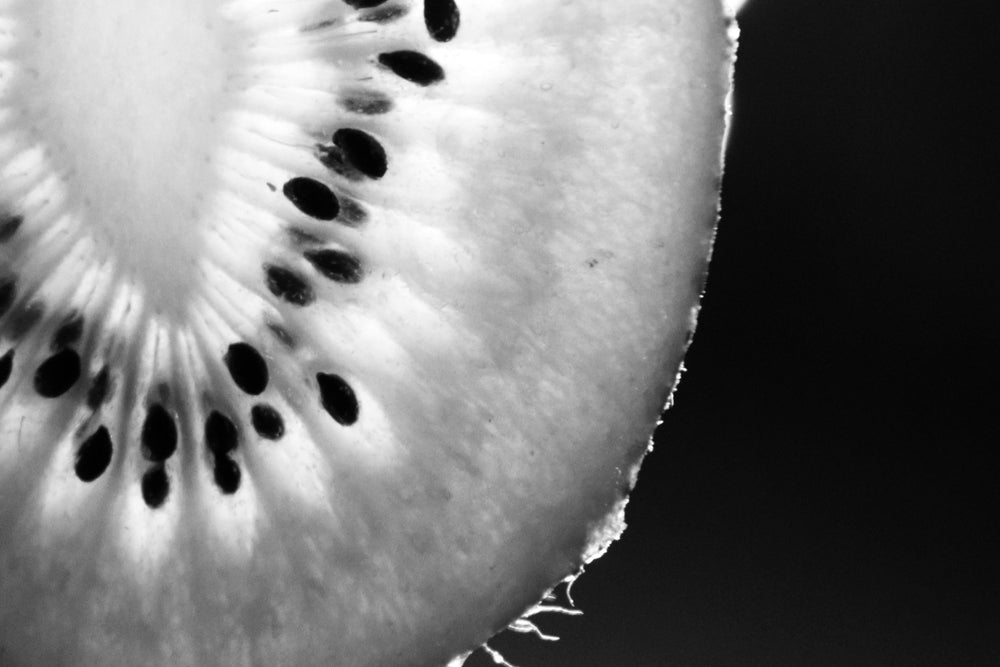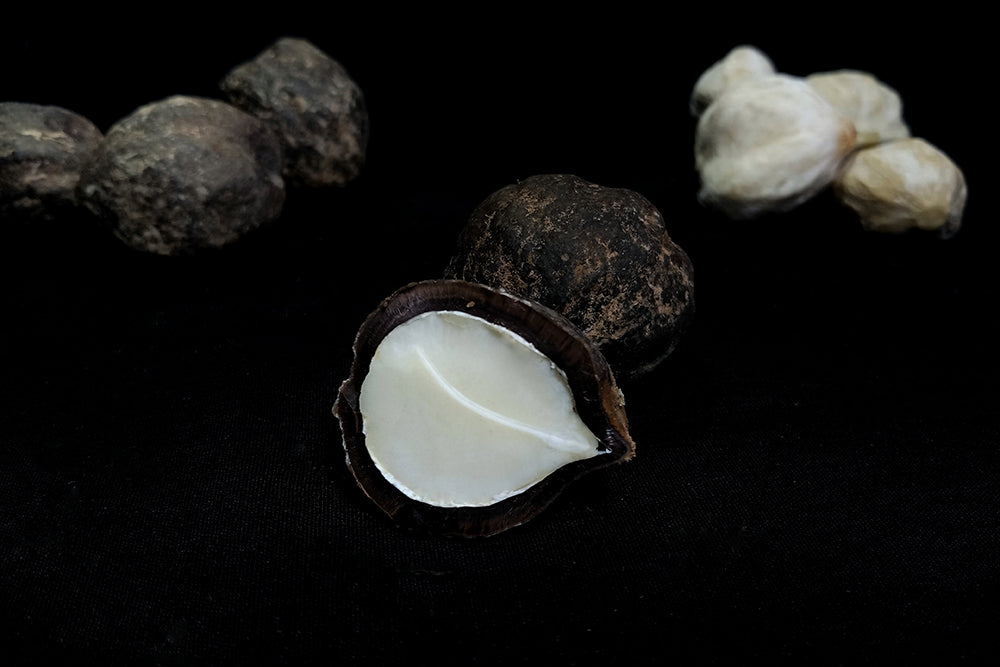
ingredient focus: lotus flower

the bottom line
Throughout human history the lotus flower has been treasured as a sacred symbol of purity and vitality, with depictions of this plant adorning the walls of Hindu temples and Egyptian tombs. But you may not know about the hidden secrets of this powerful flower. In addition to being valued for its soothing and astringent properties, the lotus flower's purifying and restorative nature makes this ingredient a treasure for skincare.
first layer: the history of the lotus
China, India, and Egypt have long honored the lotus flower with pictorial representations in each country's art symbolizing the plant's purity and beauty. The history of the lotus dates back to the ancient Egyptians, who cultivated the lotus along the Nile River. The blue lotus (technically a waterlily, but we won’t quibble) is depicted in hieroglyphs and in tombs. The Egyptian Book of the Dead even fantastically includes spells which can transform a person into a lotus flower, bringing about resurrection. Like the sun with which it is associated, the lotus disappears at night and reappears in the morning.
Buddhist tradition associates the lotus flower with faith, purity, and spiritual awakening, with the symbolism of a beautiful flower emerging from muddy waters suggests rebirth and enlightenment. The various colors of the lotus even have different meanings, with the blue lotus representing spiritual victory over our physical compulsions, and the white lotus symbolizing the awakened state of mental purity and spiritual perfection. The purple lotus, in contrast, is mystical in nature, with its eight petals believed to represent the Noble Eightfold Path, one of the main teachings of the Buddha. The red lotus represents love and compassion, while the pink lotus flower is considered to be the true lotus of the Buddha.
In Hindu tradition, too, the white lotus flower also plays a pivotal role in its association with beauty, fertility, prosperity, spirituality, and eternity. The unfolding petals of the lotus flower represent the expansion of the soul, while the mud from which it emerges contains spiritual promise.
second layer: the science of the lotus flower
The lotus flower (Nelumbo nucifera) has various names, including Indian lotus, Chinese water lily, and sacred lotus. It is a large, aquatic rhizomatous herb with an elongated and slender stem and nodal roots. It extends its roots to the soil of a river or pond bottom, while its leaves float on the surface of the water. The large flowers are found on thick stems which rise a few centimeters above the leaves. The lotus has some serious longevity, and can live for over a thousand years, even being successfully germinated after many years of rest.
Native to India, Tibet, and China, all parts of the lotus plant have been used in both traditional Chinese and Ayurvedic medicine. But modern science loves the lotus too – the whole plant has been used for various ailments of the skin and digestive system.
Lotus root contains high levels of vitamin C; copper; vitamins B1, B2, and B6; and manganese. Vitamin C and copper promote collagen synthesis in the skin, while both vitamin C and manganese act as anti-oxidants*. Vitamin C also plays a role in fighting hyperpigmentation. The B vitamins are critical for our health, so ingesting your lotus works, too. Vitamin B1 (thiamine) is critical for the healthy function of our organs, including the brain and heart. Vitamin B2 (riboflavin) helps the body to break down fats (hooray), and vitamin B6 (pyridoxine) helps us to make new red blood cells. All in a day’s work for our lovely lotus.
third layer: skin care and the lotus
Some of the most important functions of the lotus flower for skin care derive from its metabolic constituents, including flavonoids and alkaloids. These include the following:
1) antioxidant*: an extract of Nelumbo nucifera seeds has shown significant free radical scavenging activity in both in vitro and in vivo models. Another study using lotus blossoms and leaves also confirmed antioxidant activity.
2) antiviral: isolates from leaves and seeds of Nelumbo nucifera have demonstrated activity against HIV and herpes simplex type I (HSV-1), respectively.
3) anti-inflammatory*: extracts of the Nelumbo nucifera rhizome have shown marked anti-inflammatory against cells responsible for the effects of inflammation.
4) astringent*: all parts of the lotus plant have been used for its astringent effects.
fourth layer: how we do it
anokha’s award-winning lotus flower & rosewater toner embraces the essence of rose petals and sacred lotus flower extract to soften and nourish the skin. Combined with Centella asiatica and burdock root, it presents the perfect palette for flawless skin. Our lotus & lychee facial crème layers lotus flower, lychee extract, plum, elderberry, and ylang ylang for skin that’s as soft and supple as it is bright and bouncy.
All this and more at www.anokhaskincare.com .
xx
anokha
references:
Paudel KR, Panth N. Phytochemical profile and biological activity of Nelumbo nucifera. Evid Based Complement Alternat Med 2015:789124.
https://draxe.com/nutrition/herbs/lotus-root/
https://www.medicalnewstoday.com/articles/324856.php
Rai S, Wahile K, Mukherjee B, Saha BP, Mukherjee PK. Antioxidant activity of Nelumbo nucifera (sacred lotus) seeds. J Ethnopharmacol 2006; 104(3): 322-327.
Lee HK, Choi YM, Noh DO, Suh HJ. Antioxidant effect of Korean traditional lotus liquor (Yunyupju). Int J Food Sci Tech 2005; 40(7): 709-715.
Kashiwada Y, Aoshima A, Ikeshiro Y et al. Anti-HIV benzylisoquinolone alkaloids and flavoinoids from the leaves of Nelumbo nucifera and structure-activity correlations with related alkaloids. Bioorg Med Chem 2005; 13(2): 443-448.
Kuo YC, Lin YL, Liu CP, Tsai WJ. Herpes simplex virus type I propagation in HeLa cells interrupted by Nelumbo nucifera. Biomed Sci 2005; 12(6): 1021-1034.
Mukherjee PK, Saha K, Das J. Pal M, Saha BP. Studies on the anti-inflammatory activity of rhizomes of Nelumbo nucifera. Planta Medica 1997; 63(4): 367-369.
definitions:
antioxidant: an antioxidant is a compound that inhibits oxidation. free radicals create oxidative stress and an inflammatory response which in turn can damage DNA and result in injury to the epidermal and dermal layers of the skin. in the skin, this manifests as premature aging with decreased elasticity leading to increased wrinkling, age spots, and decreased skin tone. antioxidants stabilize free radicals, which in turn limits their ability to damage the body.
anti-inflammatory: a substance that reduces inflammation in the body.
astringent: derived from the Latin word adstringere ("to bind tight"), an astringent is a substance that tightens the skin. in skincare, we use them to cleanse, help reduce the appearance of pores, and even reduce inflammation and acne. some commonly used astringents include alcohol and witch hazel, but these aren't our favorites because of their drying effects. we favor gentle botanical ingredients such as rosewater that can boost hydration while soothing and calming the skin.
for more definitions, please visit the glossary.
faq's:
is lotus flower good for your skin?
lotus flowers are rich in flavonoids and antioxidants which help to protect from environmental stressors and free radical damage.
what does lotus extract do for the skin?
lotus extract helps to promote skin hydration, anti-aging, and skin health.



leave us a comment
This site is protected by hCaptcha and the hCaptcha Privacy Policy and Terms of Service apply.